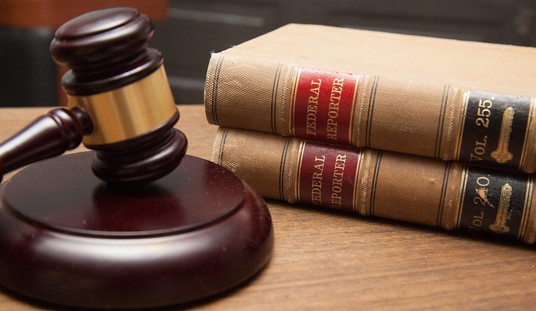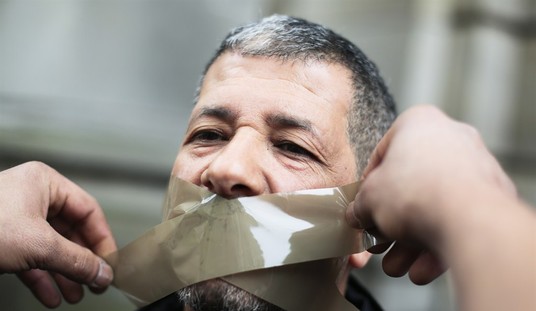From the very beginning of the “Black Lives Matter” movement, self-righteous, fact-challenged, and subject matter-illiterate journalists have been crafting a narrative that law enforcement officers look at deadly force situations through the lens of race. That fevered—and blatantly incorrect—bit of “conventional wisdom” among the media was at its most obvious when the media parroted the “hands up, don’t shoot” lie crafted by a criminal who already had warrants out for his arrest for lying to police.

That institutional bias doesn’t still just exist; it seems to be getting much worse. The bias is blatantly obvious in a recent Cincinnati Enquirer piece by Chris Graves. Graves’s bio says that she is, “Passionate about the future of news,” and that she thrives “on chaos with a purpose.”
The “chaos with a purpose” in her most recent article is a fact-free attempt to smear the Cincinnati Police Department as being racist. Let’s dissect her assumptions and failures as she asserts that Cincinnati Police had racial biases in how they handled two separate instances of police dealing with men armed with fake handguns last week.
Graves is clearly operating from the presumption that since the white suspect, Christopher R. Laugle, was only tased for pointing a fake gun at a cop, and the black suspect, Paul Gaston, was shot nine times, that race was the deciding issue in the resolution of their confrontations.
Two incidents last week involving police officers in separate Greater Cincinnati communities – one involving a white suspect and one involving a black suspect – have attracted renewed attention to the issue of race in police confrontations.
Christopher R. Laugle pointed a toy gun at Mount Healthy police officers, who stunned him with a Taser last Tuesday night. He was arrested and sent to jail.
Just hours later in Cheviot, Paul Gaston was reaching for what turned out to be a toy gun in the waistband of his pants, Cincinnati police said. Officers shot him with their handguns. Gaston’s body was sent to the morgue, and the internal investigation into the deadly shooting continues.
Laugle, 26, is white. Gaston, 37, was black.
And that distinction has spawned a fresh discussion about whether authorities are more likely to use lethal force against black men.
If Chris Graves or her other allies in the media had even basic competence—and could set aside the fictional narrative of widespread racial bias in policing they’re so desperately trying to push—they’d immediately know that the Laugle and Gaston cases were radically different in every way, and that the only thing they had in common was the presence of a plastic gun.
* * *
The Laugle Case Involved a Known-Fake Gun
Police responded to a woman’s home to deal with a man who would not leave. The officers who arrived were told by the woman that the gun inside was an airsoft gun, and they could clearly see the orange tip, as Graves herself reported.
Officers were first called to the home by someone who texted 911 saying they needed help, he said. When officers arrived they spoke with the woman who lived at the home, who told officers she wanted a man, who had been living on her porch, to leave her home. The man did. To ensure the woman safe, the officers asked her if there was anyone else at the home and through a partially opened door saw a second man and a gun lying on a coffee table.
The woman told officers the gun was fake, picked it up and was told by officers to put it down. At that point, the man later identified as Laugle grabbed it from her and pointed it at officers, who also told him to put it down. He kept walking toward the officers with the gun, Demasi said.
“The officers would have been in their right to use deadly force at that point and thankfully they didn’t,” Demasi said. “They were afforded more time (than Cincinnati in its case), they suspected it to be a fake gun. Those additional seconds saved this guy from being shot.”
Officers in the Laugle case were dealing with a “known known.” They knew from the woman who lived there that the airsoft gun was, in fact, an airsoft gun. She picked it up and showed it to the officers. They visually verified the “firearm” was a toy before Laugle ever touched it.

“Man With A Gun”
We’d covered the Paul Gaston story in great detail (including two videos of the shooting) previously.
Five officers were on the scene attempting to take Gaston into custody. When he went for a realistic airsoft gun at his waist, the three officers directly in front of him fired a total of nine shots in roughly a second.
These three officers could clearly see what Gaston was reaching for in a head-on view as shown in a version of the video shown below; two others were off to Gaston’s right but did not fire.
In the Gaston case, officers were dealing with a “known unknown.” They had 911 callers who reported that a man who appeared to be under the influence wrecked his vehicle, then had dropped a gun, picked it up, and ran off. Officers eventually found Gaston, and attempted to take him into custody. Five officers had guns drawn on Gaston, and told him to lay down so that they could take him into custody. Despite warnings not to do so, Gaston instead attempted to draw the gun.
Here’s a freeze-frame of the moment Gaston reached for the gun thrust in his pants, a split-second before officers opened fire.

The three officers directly in front of Gaston has the best angle to see exactly what he was doing and saw the gun in his pants. They were forced to fire because of Gaston’s attempt to draw the gun from his waistband, and immediately ceased fire once he stopped reaching for the gun. The shooting lasted just one second, and was clearly justified.
* * *
These were completely different incidents. Both sets of Cincinnati officers handled these very different encounters 100% appropriately. Race plays no component at all in either incident.
Chris Graves, like so many journalists today, is attempting to create racial anger and strife because those kinds of stories draw attention to the news outlets and create more strife that drives more media coverage. She isn’t covering the news, she’s manufacturing it, and she isn’t alone.
In a just world, propagandists like Chris Graves would be terminated immediately and their media outlets would issue profuse apologies for attempting to craft a racial narrative where one clearly doesn’t exist. Fortunately for Ms. Graves, she’d face no penalties for stoking black hatred of the Cinncinati Police, at least not from her publisher.
Sadly, lying to readers is simply how journalists operate today, and the media business accepts it.








Join the conversation as a VIP Member